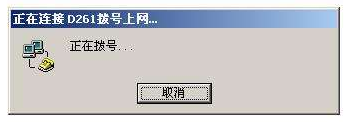200mbps is 200 megabit broadband. The so-called broadband 200Mbit actually means that the broadband access rate is 200Mbit; because "1Mbps = 1024kbps = 1024/8 KBps = 128KB/s", if converted, the download speed of 200M broadband is: "200 * 128 KB/ s = 25600 KB/s = 25600 / 1024 MB/s = 25.6MB/s”.

The operating environment of this tutorial: Windows 7 system, Dell G3 computer.
200Mbps means a transmission speed of 200 megabytes per second. 200mbps is 200 megabytes.
The so-called broadband 200Mbit actually means that the speed of the broadband access is 200Mbps, where 200Mbps refers to 200Mbps, and the unit is "bits". It does not refer to the network where files are downloaded in daily life. Speed unit "bytes".

The theoretical maximum download speed of 200MB is 25.6MB/s. 2, 4, and 8 Mbps in broadband network speeds usually refer to 2, 4, and 8 Mbps. bps (bits-persecond), that is, bit rate, bits/second, bits/second, bits transmitted per second, a common unit of data transmission rate.
b is actually bits, that is, bit, and the full English name of B is Byte (byte). Their conversion relationship is: 1Byte=8 bits

There is a conversion relationship, then the problem of broadband bandwidth is easily solved:
1Mbps = 1024kbps = 1024/8 KBps = 128KB/s
In other words, if your home has a 1M broadband, then The actual download speed theoretical value is 128KB, then the download speed of 200M broadband is: 200 * 128 KB/s = 25600 KB/s = 25600 / 1024 MB/s = 25.6MB/s,
So 200M broadband The theoretical maximum download speed of broadband is only 25.6MB/s. That is to say, if you are not restricted by any server or your own equipment bottleneck, your download speed will be 25.6MB, not 200MB.
After understanding the above formula, a quick calculation method for the actual download speed is: bandwidth ÷ 8 = maximum download speed.
About the uplink and downlink rates.
In the past, when the network was relatively slow, operators provided broadband to users, such as 10Mbps broadband. The operator would set the uplink and downlink to 10Mbps. Later, as broadband became more and more popular, Quickly, when the operator increased the broadband speed of Lao Zhang's home to 20Mbps, the uplink speed was still 10Mbps, but the downlink speed was increased to 20Mbps. Later, the downlink speed was increased to 200Mbps, and the uplink speed was still 10Mbps. This approach has been criticized by many people. In fact, this is not only a trick of the operators, but also a last resort.

Let’s talk about upstream and downstream first. When we usually go online and visit a web page, only when you enter the URL and submit it, it is the upstream data. Submit your needs to the server, and then The process of opening a web page is downloading, and the server's data is downloaded to your browser. If you are downloading a file, except for a small amount of upward movement at the beginning, the rest is downward. This is a broad concept. In fact, there is always a small amount of uplink data in this process, which is negligible compared to the large bandwidth.
There are several reasons why operators limit the uplink rate: first, to save limited bandwidth, which can be regarded as maximizing resources; second, to prevent someone from using high-speed home broadband for commercial purposes. As we all know, the broadband provided by China Unicom to enterprises is priced at 3,000 yuan per month for 100M. Compared with the part-time home broadband, the difference is more than ten times. Some small businesses have opened up home broadband and used it in the office, which can be regarded as a benefit. Operator's loophole. In order to prevent this phenomenon from happening, it is necessary to limit the uplink bandwidth, which is also a last resort. Third, users do not have a large demand for uplink, and the impact after the restriction will not be too great.
After limiting the uplink, there are several impacts: First, the video chat may be stuck, but with the current 10Mbps uplink, it is basically smooth, so as long as no one is uploading things at the same time, Generally not aware of it. Second, the speed of uploading files to the network disk is limited. Many people like to put large files in network disks. It is really uncomfortable to see the pitiful 1MB/s when uploading.

Nowadays, many operators' contracts have clearly stated that the downlink bandwidth is 100Mbps, and some even specify that the uplink bandwidth is 10Mbps, which can be regarded as a clear price tag. If you don’t feel comfortable with the upside, just spend more money on enterprise broadband.
Bandwidth is limited by many factors.
If this problem is clarified, but the so-called speed is still not achieved, there are many reasons. We have written a special article to discuss this, so we will not go into detail today. For example, switches, routers, network cables, network cards, and optical modems may all have bottleneck restrictions that prevent the 200M bandwidth from being reached.
In addition, the servers you visit also have certain restrictions.
For example, when we download something from a certain website, the website server may have an outlet of 10M, so you can only reach its maximum value.
For example, when we download something from a certain network disk, the network disk may have restrictions. Unless you are a gold member who spends money, you can achieve the highest download rate.
These things are like a highway, from city A to city B. Along the way, there must be enough lanes, enough bridges, and enough entrances and exits, so that you can speed all the way. If the bridge on a certain section has only one lane, the speed will be stuck here.
For more related knowledge, please visit the FAQ column!
The above is the detailed content of 200mbps is how many megabits of broadband?. For more information, please follow other related articles on the PHP Chinese website!
 600m宽带实际网速多少Mar 15, 2023 pm 02:57 PM
600m宽带实际网速多少Mar 15, 2023 pm 02:57 PM600m宽带实际网速为60M-70M左右每秒。600M指的就是600兆(Mpbs)宽带,换算成以字节计算的数据传输速度:1Mbps=1/8MBps,那么600兆宽带的下载速度就是“600÷8=75MB/s”,也就是每秒75MB的下载速度;但这个数据只是理论下载速度,实际上宽带下载速度受很多因素影响,比如说路由器网络传输占道、网络延迟问题,一般实际网速在60M-70M左右每秒。
 以太网和宽带的区别是什么?Dec 08, 2020 pm 02:28 PM
以太网和宽带的区别是什么?Dec 08, 2020 pm 02:28 PM区别:以太网是当今现有局域网采用的最通用的通信协议标准,以太网在互联设备之间以10-100Mbps的速率传送信息包;宽带并没有很严格的定义,一般是以56Kbps为分界,将56Kbps及以下的接入称为“窄带”,之上的接入方式则归类于“宽带”。
 200mbps是几兆宽带Mar 20, 2023 pm 02:21 PM
200mbps是几兆宽带Mar 20, 2023 pm 02:21 PM200mbps是200兆宽带。所谓的宽带200兆其实就是指宽带所接入的速率是200兆;因为“1Mbps = 1024kbps = 1024/8 KBps = 128KB/s”,换算一下,200M宽带的下载速度就是:“200 * 128 KB/s = 25600 KB/s = 25600 / 1024 MB/s = 25.6MB/s”。
 1000兆宽带上行和下行是多少Oct 28, 2022 am 11:02 AM
1000兆宽带上行和下行是多少Oct 28, 2022 am 11:02 AM1000兆宽带下行速率是1000 Mbps,上行速率是30 Mbps;但准确来说,上行速率是不一定的,因为普通用户上行速率都有限速,与办理宽带当地运营商有关;一般如果是专线宽带,则上行速率和下行速率对等。
 30mb/s是多少兆宽带Mar 20, 2023 am 11:18 AM
30mb/s是多少兆宽带Mar 20, 2023 am 11:18 AM30mb/s大概是240兆宽带,换算公式是“30MB/Sx8=240M”;通常所说的文件大小的兆是指4MByte;字节(Byte)是计算机信息技术用于计量存储容量的一种计量单位,也表示一些计算机编程语言中的数据类型和语言字符。
 校园网和宽带有什么区别吗Sep 20, 2023 pm 05:27 PM
校园网和宽带有什么区别吗Sep 20, 2023 pm 05:27 PM校园网和宽带的区别在使用场景和网络范围、速度和带宽、服务提供商、使用限制和服务内容等方面。详细介绍:1、使用场景和网络范围,校园网是针对学校、大学或者教育机构内部提供的局域网服务,它主要覆盖学校的教学楼、宿舍楼等区域,为学生、教职员工提供网络连接服务,通常由学校自行搭建和管理,提供特定的网络资源和服务,宽带是一种广域网服务,提供给个人用户或者家庭使用的高速互联网连接等等。
 宽带移机是什么意思Oct 27, 2022 pm 03:00 PM
宽带移机是什么意思Oct 27, 2022 pm 03:00 PM宽带移机是指客户所装宽带需要迁移变更到新的装机地址时,向电信公司提出移机业务申请,电信公司根据客户要求和资源情况,及时为客户进行宽带业务的地址迁移;户主只需要携带身份证到当地营业厅办理移机业务即可。
 宽带上网技术简史Apr 16, 2024 am 09:00 AM
宽带上网技术简史Apr 16, 2024 am 09:00 AM在如今这个数字时代,宽带已经成为我们每个人、每个家庭的生活必需品。如果没有它,我们会坐立难安、心绪不宁。那么,你知道宽带背后的技术原理吗?从最早期的56k“猫”拨号,到现在的千兆城市、千兆家庭,我们的宽带技术到底经历了怎样的变革?今天这篇文章,我们就来详细了解一下——“宽带的故事”。█xDSL和ISDN下面这个界面,你见过吗?我相信很多70后80后的小伙伴,肯定见过,并且非常熟悉。没错,这就是当年我们最初接触互联网时,进行“拨号上网”的界面。那还是20多年前,小枣君还在上大学的时候。为了上网,我

Hot AI Tools

Undresser.AI Undress
AI-powered app for creating realistic nude photos

AI Clothes Remover
Online AI tool for removing clothes from photos.

Undress AI Tool
Undress images for free

Clothoff.io
AI clothes remover

AI Hentai Generator
Generate AI Hentai for free.

Hot Article

Hot Tools

VSCode Windows 64-bit Download
A free and powerful IDE editor launched by Microsoft

SublimeText3 Mac version
God-level code editing software (SublimeText3)

EditPlus Chinese cracked version
Small size, syntax highlighting, does not support code prompt function

MantisBT
Mantis is an easy-to-deploy web-based defect tracking tool designed to aid in product defect tracking. It requires PHP, MySQL and a web server. Check out our demo and hosting services.

mPDF
mPDF is a PHP library that can generate PDF files from UTF-8 encoded HTML. The original author, Ian Back, wrote mPDF to output PDF files "on the fly" from his website and handle different languages. It is slower than original scripts like HTML2FPDF and produces larger files when using Unicode fonts, but supports CSS styles etc. and has a lot of enhancements. Supports almost all languages, including RTL (Arabic and Hebrew) and CJK (Chinese, Japanese and Korean). Supports nested block-level elements (such as P, DIV),






